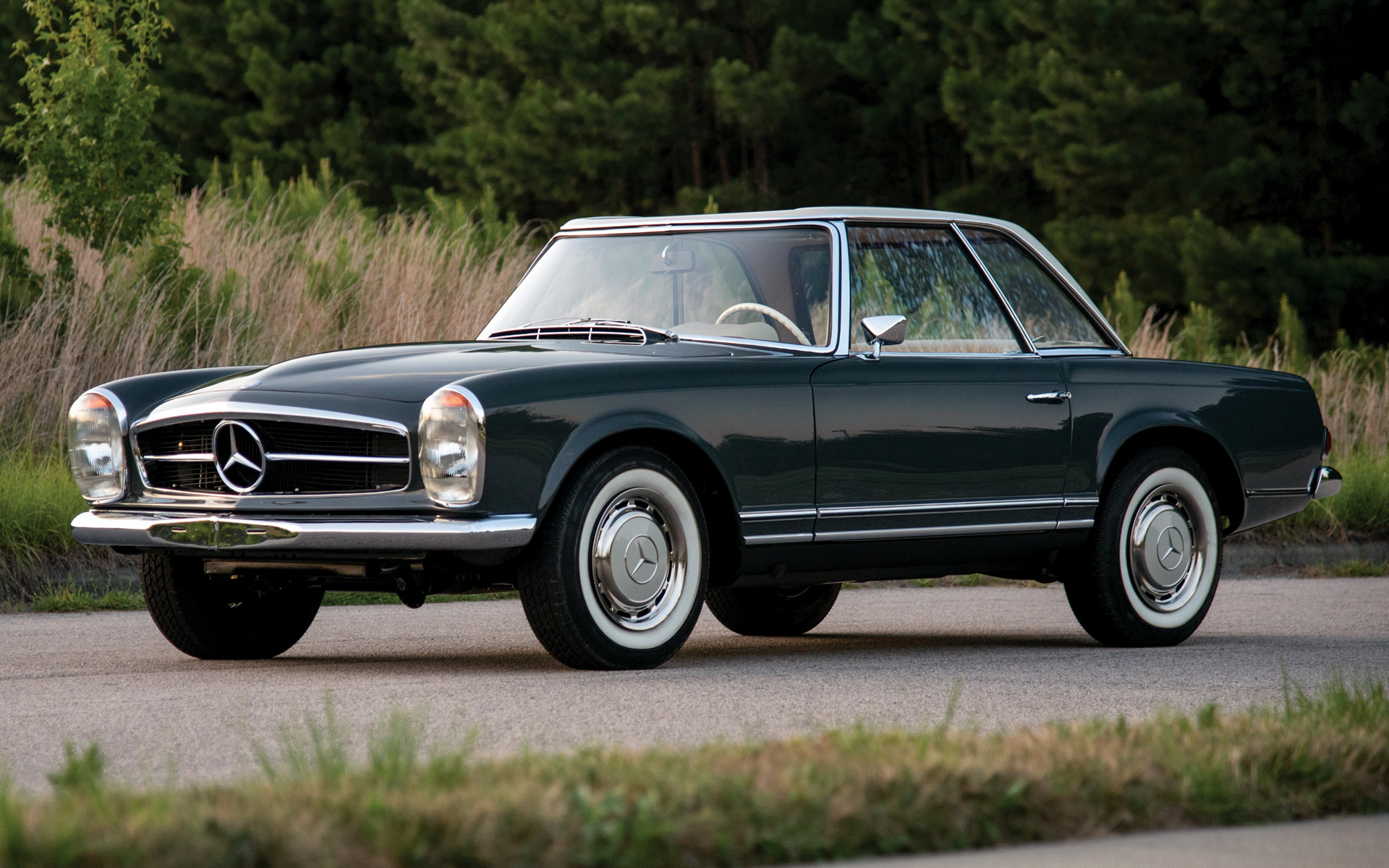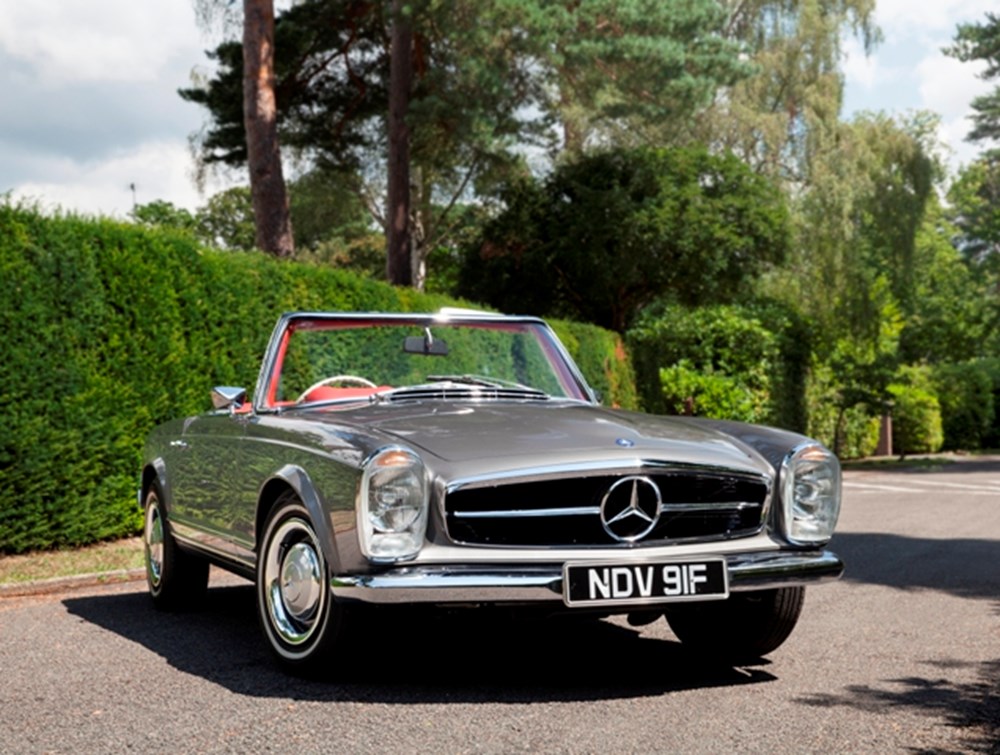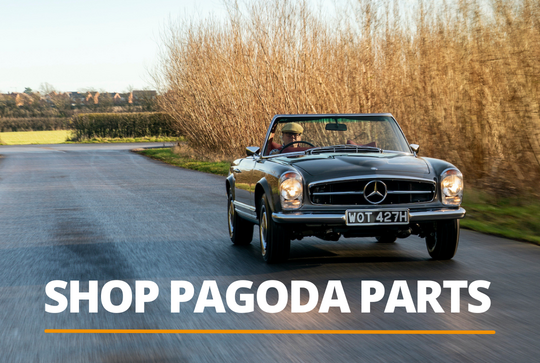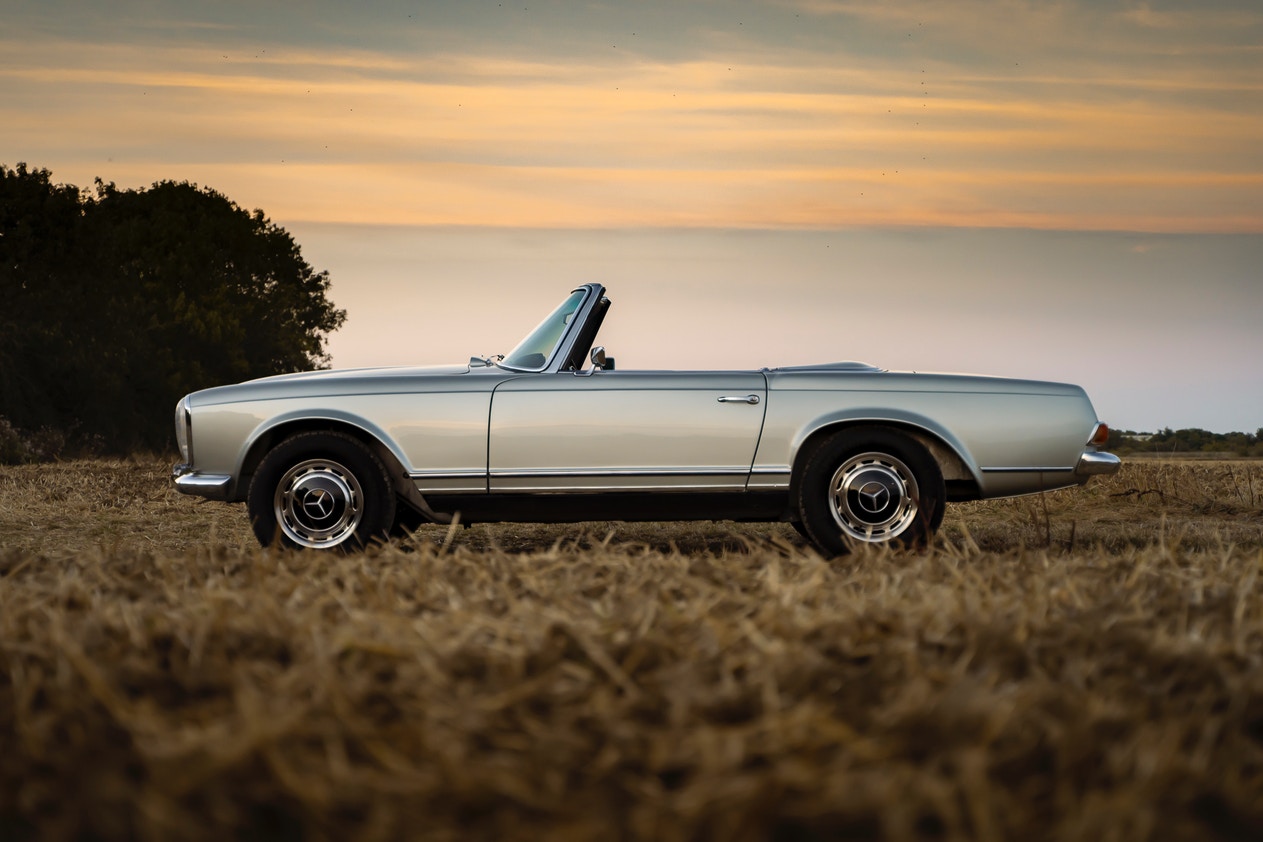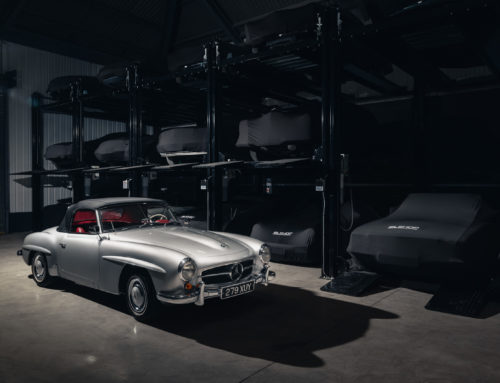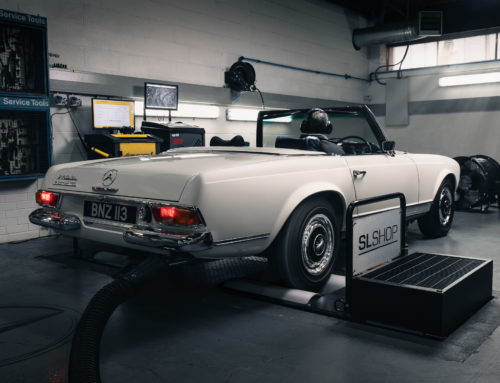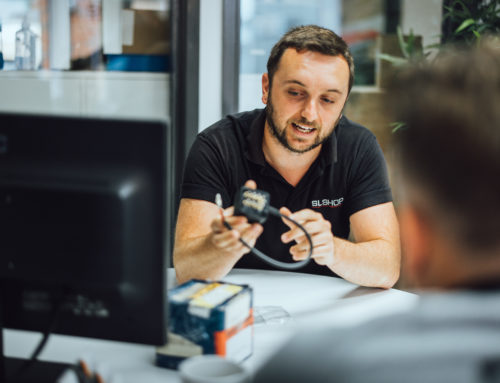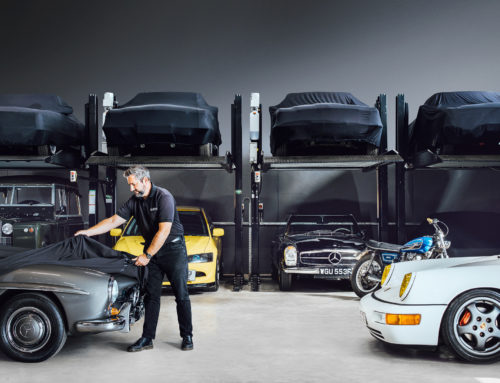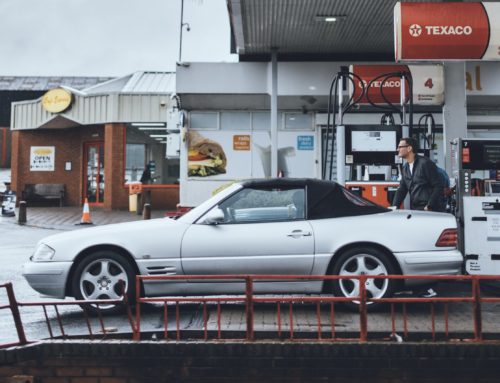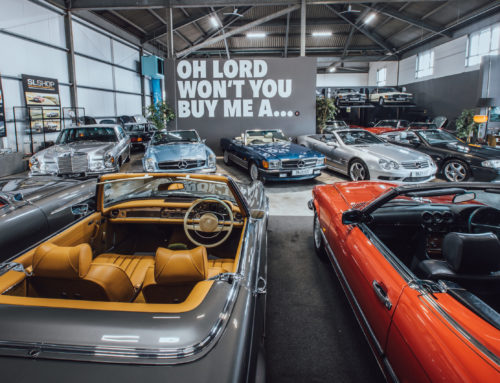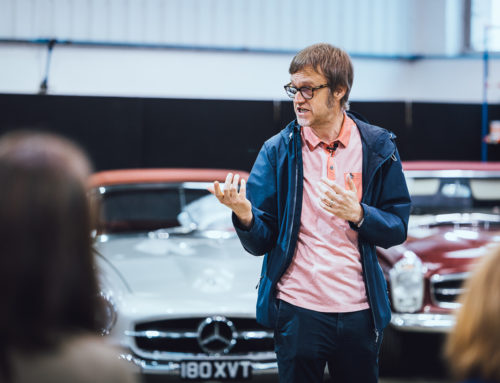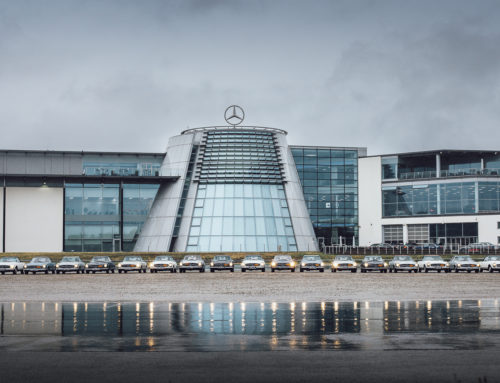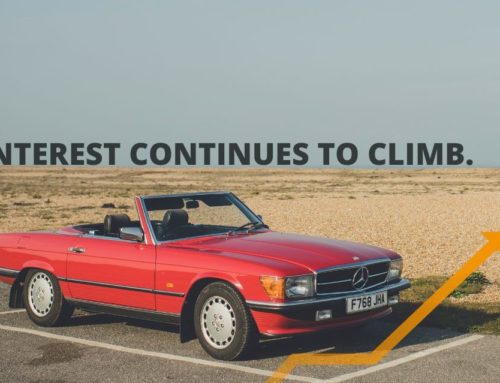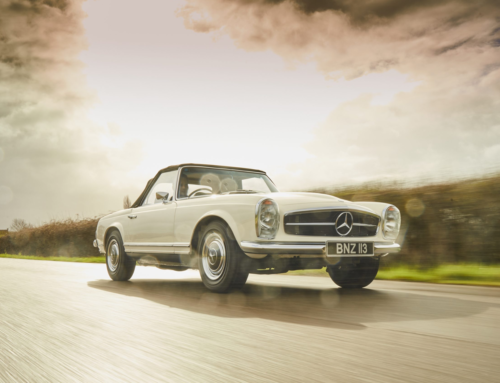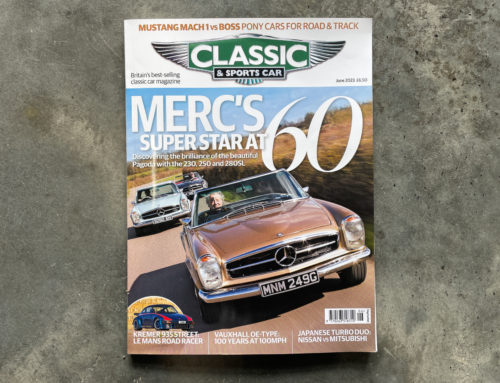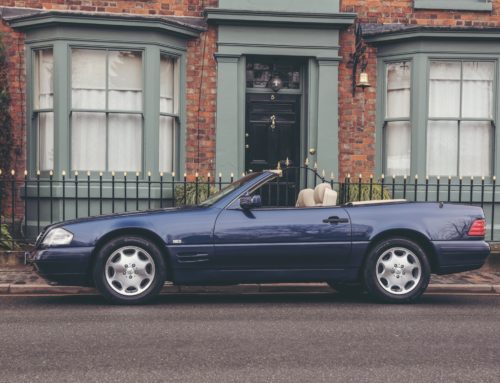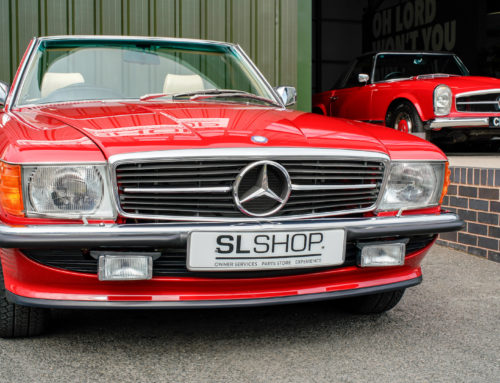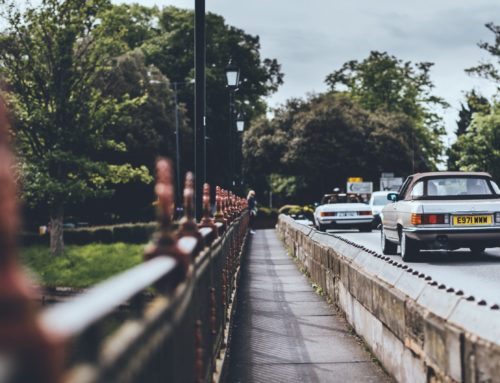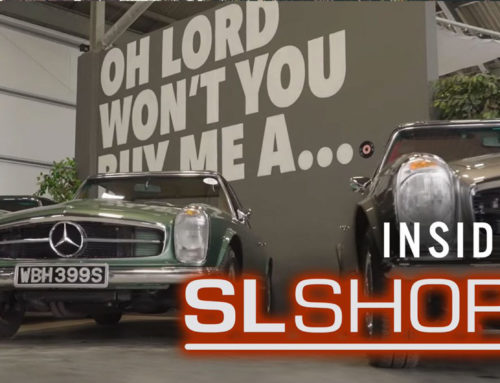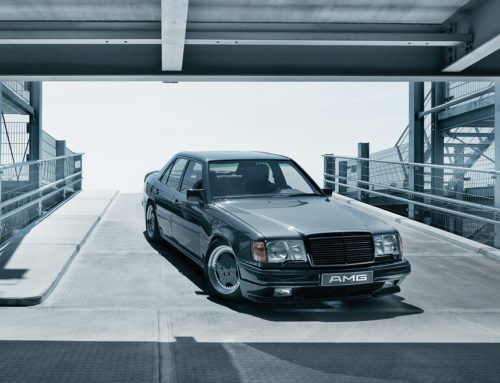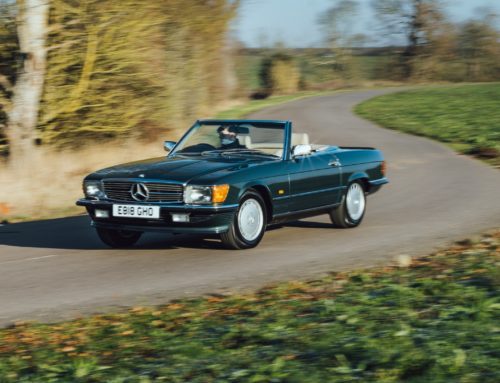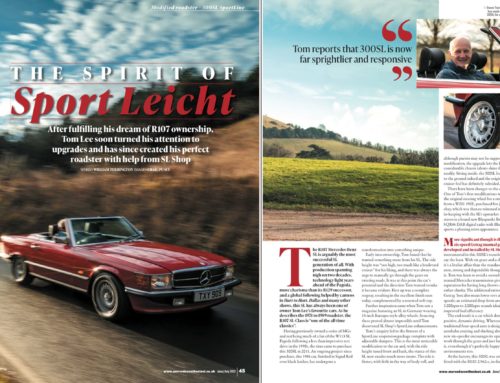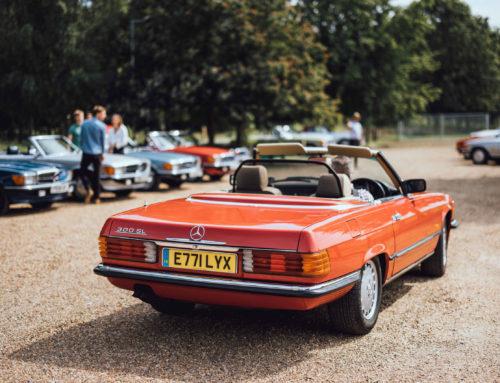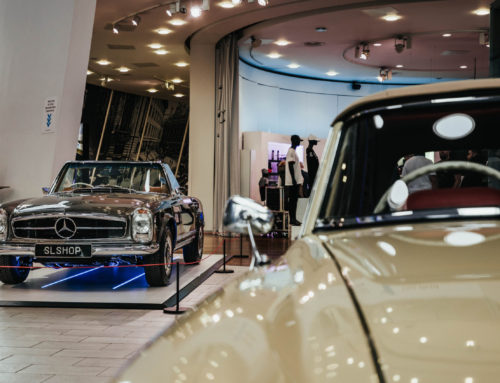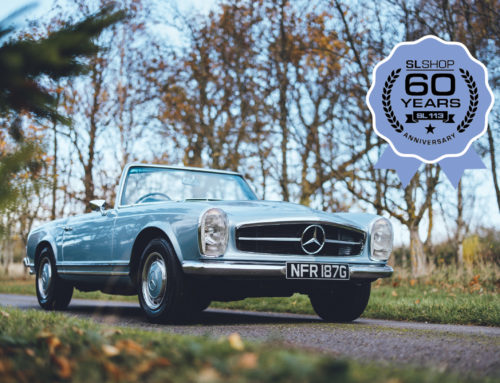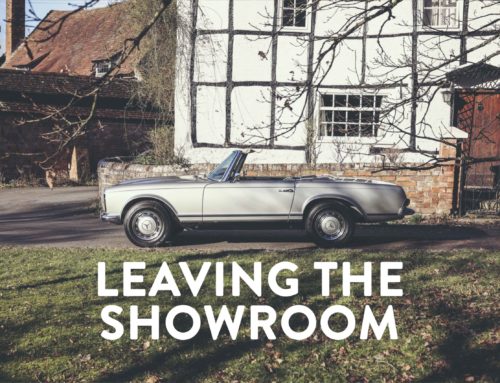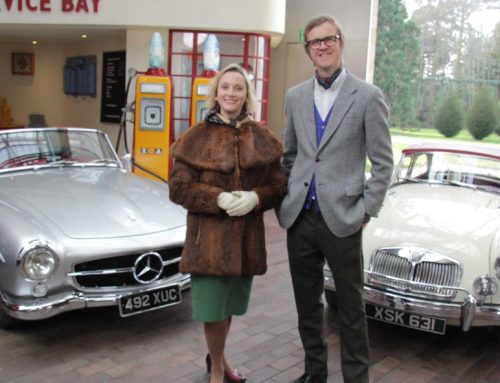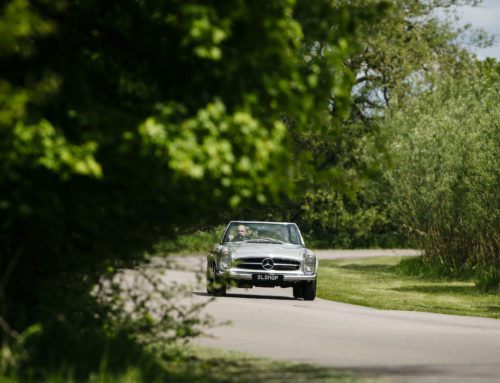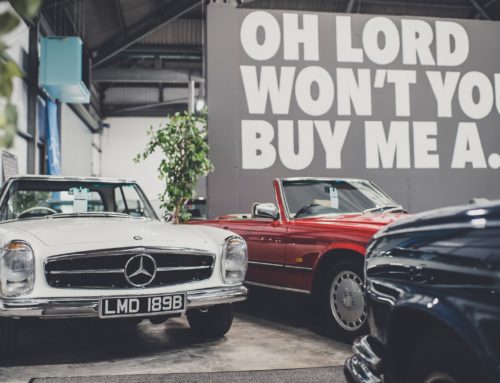Two simple letters. On their own, nondescript. Random even. But peel back that seemingly irrelevant cover page, and very quickly you discover an ironclad engineering ethos. An unmistakable automotive and social statement. SLs have always been special. Today the W113 is one of the most sought after of these highly desirable 2-door sports convertibles. And the Mercedes 250 SL Pagoda possesses all the traits that promote such desire.
The roots and original meaning of the SL badge are, to this day, a point of conjecture. Some suggest it was a natural progression from the famed 1931 SSKL (Super Sport Kurz Leicht – Super Sport Short Light). Various authoritative German publications confirmed with senior Mercedes Benz staff that SL was intended to stand for either Sport Leicht, or Super Leicht. At the time, Mercedes Benz themselves gave no such confirmation.
It was obvious, from the moment the very first SL – the universally vaunted 1954 300SL – rolled off the Stuttgart assembly line, that an irreplaceable automotive superstar had been born. For nearly 70 years, the SL nomenclature has adorned the boot-lids of the very best of Mercedes Benz’s 2-door sports cabriolets and coupes.
The W113 SL – colloquially known as The Pagoda – replaced the incredibly successful, aforementioned 300SL Coupe, the 300SL Roadster, and the more affordable 190SL. Built on a bespoke, tube-frame chassis, they combined race car mechanicals with the very best in interior luxury. The 300s were massively expensive and super-limited in their production numbers. Mercedes built just over 3,000 coupes and roadsters. You’d have to part with over $10,000 – a bold price tag, at the time – in order to see one parked in your driveway.
The 190SL was built on a shortened W121 saloon’s chassis and retained the 121’s 1.9l, 4-cylider motor. It was a lovely car – beautiful, solidly built and accessible – but technically, a noticeable step behind the 300. The 190SL launched into the market at around $4,000, topping out at an estimated $5,000 by the end of its production run. Not a cheap car, but a far cry from the 300SL’s heady numbers.
At the height of the Swinging Sixties, a growing percentage of the world’s population found financial freedom. Wanting to express their tastes, their individual panache and their success, it was time to introduce a new SL. The marketing Brains Trust at Mercedes Benz knew they had to pitch something between the two previous offerings. The new car could not, again, be hand-built and ultra-exclusive. But it did need to be class-leading in its build quality, and from a styling point of view, chic and alluring.
From the design sheets of Paul Bracq, Bela Barenyi and Friedrich Geiger, the W113 Pagoda rolled into the automotive stratosphere, globally recognised as an undeniable, instant classic. Given the Pagoda name because of the achingly beautiful concave shape of the removable hardtop, the 1963 W113 debuted as the 230SL. Production of the 230 ended in January of 1967. Production on the series-topping 280SL began in December of 1967. Not a large gap, but a void nonetheless. The Mercedes 250SL Pagoda was the filler.
In general terms, it’s uncommon for any manufacturer to produce a car for an abbreviated period. The numbers just don’t stack up. In-depth financial analysis often suggests that a model remain on sale, with the possibility of a mid-cycle upgrade, for three or four years. Sometimes longer. The changes needed to the production line and staff training, and the marketing material needed for a new model mean that one or two years’ sales won’t cover the expenses. But the Mercedes 250 SL Pagoda was an outlier in this regard.
The Short-Lived Mercedes 250 SL
Including the overlaps in production – MB started building the Mercedes 250SL Pagoda before the 230 was replaced and kept it in production after the 280 was launched – the 250SL lived for just 14 short months. So what happened? Why the uncommonly truncated lifespan?
In a seemingly contradictory automotive manufacturing scenario, it was almost certainly Mercedes Benz’s global production planning which lead to the switch. Finding the same engine and gearbox in two or three different body styles is, in Mercedes Benz ethos, not necessarily a contemporary ideology. MB has always used common mechanical parts across various ranges. And with engines this well-built, and this adaptable, why wouldn’t you? A closer look at what else was on the market for the brand, at the time, sees various sedans and coupes all initially available with the 2.3l, 6cyl motor we see in the 230SL.
The move to the two-and-a-half litre evolution of that motor was always on the cards. As was, and here’s the important bit, the further development of that 6-pot, to a beefier 2.8l. It’s highly likely that, before the Mercedes 250 SL was launched, the 280 was already in the wings. Their entire range was walking through this same transformation. The timing of this metamorphosis, as it relates to the SL, brought the 2.8l motor into play sooner, rather than later.
Conjecture around Mercedes Benz chasing power hikes with the 280SL in order to compete with Jaguar and Porsche are quickly dispelled. Mercedes Benz has never followed the market. They’ve always led it. And the SLs, with the exception of perhaps the very first 300SL, have never aspired to be the fastest cars around. They’re simply the best 2-door, luxury sports convertible cruisers in the world.
Today, there’s no doubt where the money is. Unsurprisingly, it’s the most powerful of the three that commands the premium. The 280SL is, according to the market, the one to have. But here are a few things to consider before totally discarding the (problem) middle child. The 2.8l motor is a bored-out version of the 2.5. That doesn’t mean that it’s mechanically flawed, but it’s not the way the original engine was designed. The 2.5 was an entirely new engine – with seven bearings on the crank, over five for the 2.3. The 250 SL Pagoda also had an oil cooler fitted. Additionally, the head was a totally new design, sporting bigger valves.
Aesthetically Speaking
From an aesthetic point of view, the Mercedes 250 SL Pagoda came ‘fully-loaded’ with all the chrome and luxury features available in the top-spec, outgoing 230. The 280SL was launched with less chrome and fewer mod cons as standard. You paid extra for those special touches. When you bear in mind that the horsepower figures for the 250 are the same as the 280 – the bigger engine returns a higher torque rating – and that it has the same top speed, the 250SL, with its less lofty asking price, starts to look like the thinking man’s choice. The hidden gem. The sweet spot.
Around 5,000 of these indescribably well-built, highly spec’d, timelessly beautiful 2-door 250SL Pagodas were sold. When one considers that a mere 10% of those were RHD, buying one here in the U.K. could be the wisest choice you’ve ever made.
Should you require any support acquiring any of the W113 Pagoda models, don’t hesitate to contact our sales team. Alternatively, if you’d like to have your car restored or serviced annually by our expert Heritage Workshops, contact Russell today. You can also obtain replacement components for your W113 by visiting our dedicated Mercedes-Benz Parts Store.
Share With Your Fellow Enthusiasts
Two simple letters. On their own, nondescript. Random even. But peel back that seemingly irrelevant cover page, and very quickly you discover an ironclad engineering ethos. An unmistakable automotive and social statement. SLs have always been special. Today the W113 is one of the most sought after of these highly desirable 2-door sports convertibles. And the Mercedes 250 SL Pagoda possesses all the traits that promote such desire.
The roots and original meaning of the SL badge are, to this day, a point of conjecture. Some suggest it was a natural progression from the famed 1931 SSKL (Super Sport Kurz Leicht – Super Sport Short Light). Various authoritative German publications confirmed with senior Mercedes Benz staff that SL was intended to stand for either Sport Leicht, or Super Leicht. At the time, Mercedes Benz themselves gave no such confirmation.
It was obvious, from the moment the very first SL – the universally vaunted 1954 300SL – rolled off the Stuttgart assembly line, that an irreplaceable automotive superstar had been born. For nearly 70 years, the SL nomenclature has adorned the boot-lids of the very best of Mercedes Benz’s 2-door sports cabriolets and coupes.
The W113 SL – colloquially known as The Pagoda – replaced the incredibly successful, aforementioned 300SL Coupe, the 300SL Roadster, and the more affordable 190SL. Built on a bespoke, tube-frame chassis, they combined race car mechanicals with the very best in interior luxury. The 300s were massively expensive and super-limited in their production numbers. Mercedes built just over 3,000 coupes and roadsters. You’d have to part with over $10,000 – a bold price tag, at the time – in order to see one parked in your driveway.
The 190SL was built on a shortened W121 saloon’s chassis and retained the 121’s 1.9l, 4-cylider motor. It was a lovely car – beautiful, solidly built and accessible – but technically, a noticeable step behind the 300. The 190SL launched into the market at around $4,000, topping out at an estimated $5,000 by the end of its production run. Not a cheap car, but a far cry from the 300SL’s heady numbers.
At the height of the Swinging Sixties, a growing percentage of the world’s population found financial freedom. Wanting to express their tastes, their individual panache and their success, it was time to introduce a new SL. The marketing Brains Trust at Mercedes Benz knew they had to pitch something between the two previous offerings. The new car could not, again, be hand-built and ultra-exclusive. But it did need to be class-leading in its build quality, and from a styling point of view, chic and alluring.
From the design sheets of Paul Bracq, Bela Barenyi and Friedrich Geiger, the W113 Pagoda rolled into the automotive stratosphere, globally recognised as an undeniable, instant classic. Given the Pagoda name because of the achingly beautiful concave shape of the removable hardtop, the 1963 W113 debuted as the 230SL. Production of the 230 ended in January of 1967. Production on the series-topping 280SL began in December of 1967. Not a large gap, but a void nonetheless. The Mercedes 250SL Pagoda was the filler.
In general terms, it’s uncommon for any manufacturer to produce a car for an abbreviated period. The numbers just don’t stack up. In-depth financial analysis often suggests that a model remain on sale, with the possibility of a mid-cycle upgrade, for three or four years. Sometimes longer. The changes needed to the production line and staff training, and the marketing material needed for a new model mean that one or two years’ sales won’t cover the expenses. But the Mercedes 250 SL Pagoda was an outlier in this regard.
The Short-Lived Mercedes 250 SL
Including the overlaps in production – MB started building the Mercedes 250SL Pagoda before the 230 was replaced and kept it in production after the 280 was launched – the 250SL lived for just 14 short months. So what happened? Why the uncommonly truncated lifespan?
In a seemingly contradictory automotive manufacturing scenario, it was almost certainly Mercedes Benz’s global production planning which lead to the switch. Finding the same engine and gearbox in two or three different body styles is, in Mercedes Benz ethos, not necessarily a contemporary ideology. MB has always used common mechanical parts across various ranges. And with engines this well-built, and this adaptable, why wouldn’t you? A closer look at what else was on the market for the brand, at the time, sees various sedans and coupes all initially available with the 2.3l, 6cyl motor we see in the 230SL.
The move to the two-and-a-half litre evolution of that motor was always on the cards. As was, and here’s the important bit, the further development of that 6-pot, to a beefier 2.8l. It’s highly likely that, before the Mercedes 250 SL was launched, the 280 was already in the wings. Their entire range was walking through this same transformation. The timing of this metamorphosis, as it relates to the SL, brought the 2.8l motor into play sooner, rather than later.
Conjecture around Mercedes Benz chasing power hikes with the 280SL in order to compete with Jaguar and Porsche are quickly dispelled. Mercedes Benz has never followed the market. They’ve always led it. And the SLs, with the exception of perhaps the very first 300SL, have never aspired to be the fastest cars around. They’re simply the best 2-door, luxury sports convertible cruisers in the world.
Today, there’s no doubt where the money is. Unsurprisingly, it’s the most powerful of the three that commands the premium. The 280SL is, according to the market, the one to have. But here are a few things to consider before totally discarding the (problem) middle child. The 2.8l motor is a bored-out version of the 2.5. That doesn’t mean that it’s mechanically flawed, but it’s not the way the original engine was designed. The 2.5 was an entirely new engine – with seven bearings on the crank, over five for the 2.3. The 250 SL Pagoda also had an oil cooler fitted. Additionally, the head was a totally new design, sporting bigger valves.
Aesthetically Speaking
From an aesthetic point of view, the Mercedes 250 SL Pagoda came ‘fully-loaded’ with all the chrome and luxury features available in the top-spec, outgoing 230. The 280SL was launched with less chrome and fewer mod cons as standard. You paid extra for those special touches. When you bear in mind that the horsepower figures for the 250 are the same as the 280 – the bigger engine returns a higher torque rating – and that it has the same top speed, the 250SL, with its less lofty asking price, starts to look like the thinking man’s choice. The hidden gem. The sweet spot.
Around 5,000 of these indescribably well-built, highly spec’d, timelessly beautiful 2-door 250SL Pagodas were sold. When one considers that a mere 10% of those were RHD, buying one here in the U.K. could be the wisest choice you’ve ever made.
Should you require any support acquiring any of the W113 Pagoda models, don’t hesitate to contact our sales team. Alternatively, if you’d like to have your car restored or serviced annually by our expert Heritage Workshops, contact Russell today. You can also obtain replacement components for your W113 by visiting our dedicated Mercedes-Benz Parts Store.
Share With Your Fellow Enthusiasts
More from Journal
CARE
THE ULTIMATE CERTIFIED SERVICING INVESTMENT PLAN
Your ownership journey matters to us, which is why we have created a simple certified servicing investment plan, tailored to your individual needs and aspirations.
Start investing today and our dedicated CARE team will work with you to increase the value and enjoyment you receive from your vehicle.

STAY IN TUNE WITH SLSHOP MOMENTS
As part of SLSHOP’s community of enthusiasts, you’ll be the first to hear about events and tours, key product offers, exciting stories from owners around the world and of course… our latest additions to the showroom. So, be the first to know and you might just sneak a car on your driveway or take your car’s condition to new heights with our exclusive replacement parts.
Or, visit SLSHOP Journal
